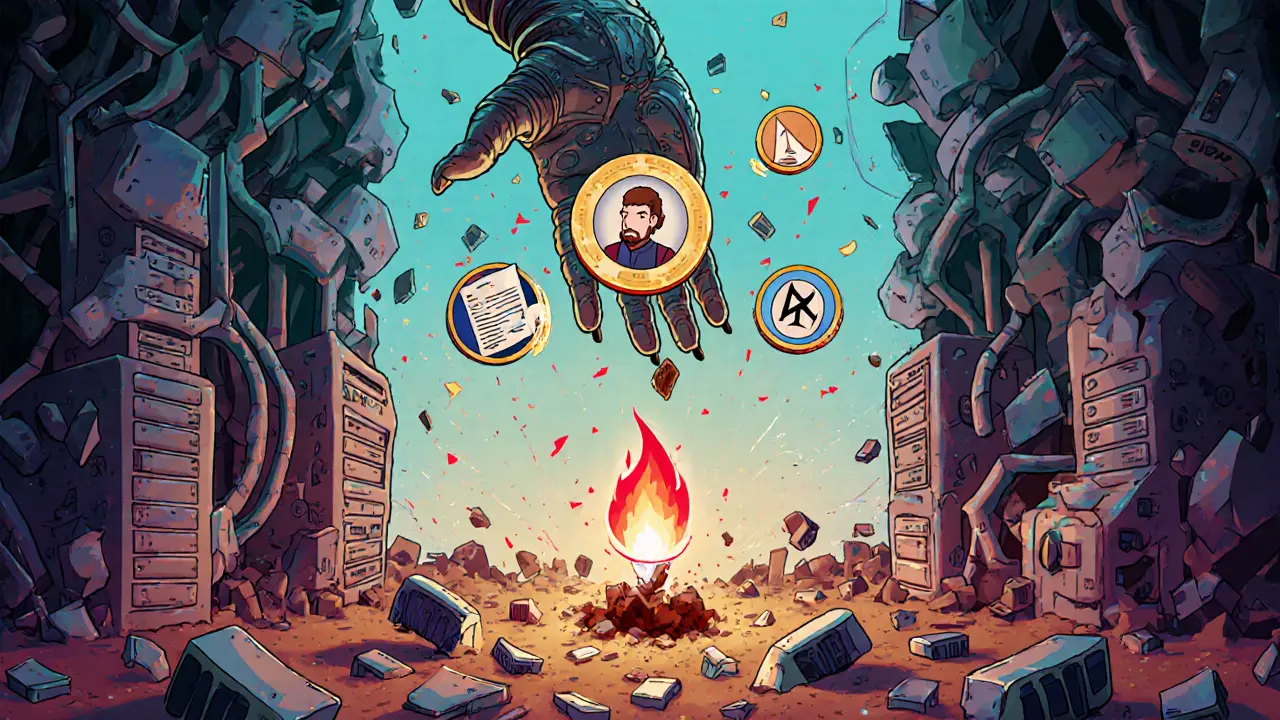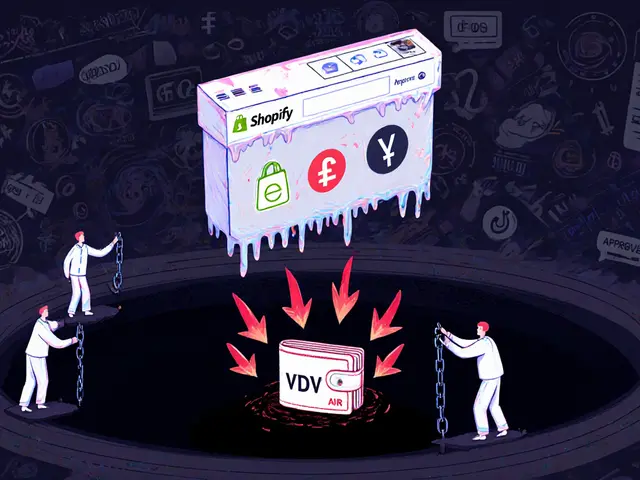By 2025, most NFTs you own aren’t really stored on the blockchain at all. That’s not a bug-it’s the system working as designed. The blockchain holds the proof of ownership, the hash, and the rules. But the actual image, video, sound, or interactive code? That lives off-chain. And as NFTs evolve from JPEGs into living, breathing digital assets, the way we store that data is undergoing a radical overhaul. The old model-upload a PNG to a centralized server and link it with a URL-is collapsing under its own weight. The future belongs to decentralized, intelligent, and permanent storage systems that can handle dynamic content, cross-platform use, and AI-driven evolution.
Why On-Chain Storage Doesn’t Work for NFTs
Storing large files directly on Ethereum or Solana sounds ideal in theory: total control, no third parties, immutable. But in practice, it’s a disaster. A single 5MB video NFT could cost over $200 in gas fees just to mint. Multiply that by thousands of assets in a collection, and you’re talking millions in transaction costs. Blockchains aren’t designed for bulk data. They’re ledgers, not hard drives. That’s why nearly every major NFT project since 2021 has relied on off-chain storage. But not all off-chain solutions are equal. Some still use Amazon S3 or Google Cloud-centralized, vulnerable to takedowns, and prone to link rot. When the server goes down, your NFT becomes a placeholder. A ghost.
The Rise of Decentralized Storage: IPFS, Arweave, and Filecoin
Three decentralized protocols now dominate NFT storage infrastructure. IPFS (InterPlanetary File System) is the most widely adopted. It doesn’t store files in one place-it distributes them across a global network of nodes. When you access an NFT, your wallet pulls the file from the nearest available node. It’s fast, resilient, and censorship-resistant. But IPFS has a flaw: nodes can drop files if they’re not actively pinned. If no one keeps a copy alive, the data vanishes.
Arweave fixes that. For a one-time fee-usually under $0.01 per MB-you pay for data to be stored forever. Arweave’s blockchain uses a novel consensus model called Proof of Access, which incentivizes miners to keep old data accessible indefinitely. It’s the only storage system that guarantees permanence. Over 60% of high-value NFT collections launched in 2025 now use Arweave as their primary storage layer, including major gaming assets and AI-generated art collections.
Filecoin operates more like a marketplace. Users rent unused storage space from individuals around the world. It’s cheaper than AWS, more scalable than Arweave, and supports dynamic updates. But it requires ongoing payments to keep data alive. For NFTs that change over time-like evolving avatars or AI-generated storylines-Filecoin’s pay-as-you-go model makes sense. For static collectibles? Arweave wins.
Intelligent NFTs Are Changing Everything
In 2024, most NFTs were static. In 2025, they’re alive. The new standard? ERC-7857, introduced by 0G Labs in January 2025. This isn’t just an upgrade-it’s a revolution. ERC-7857 allows NFTs to carry AI agents that can learn, adapt, and even re-encrypt data for new owners. Imagine buying a digital artwork that changes its style based on your mood, detected through wearable data. Or a virtual pet that evolves as you play with it over months. These aren’t sci-fi concepts anymore. They’re live on platforms like Oasys and Immutable X.
Storing these assets isn’t about holding one file. It’s about storing state history. Every change, every interaction, every AI-generated variation must be logged and verifiable. This demands versioned storage systems that track evolution without breaking provenance. Arweave and Filecoin are adapting with append-only storage layers. Some platforms now store each iteration as a new hash, chained back to the original NFT. This way, the NFT’s history is immutable, even as its appearance evolves.

AI Is the New Content Engine
Thirty percent of new NFT projects in 2025 use AI to generate or modify content. Some use it to create thousands of unique traits automatically. Others use it to generate dynamic narratives-like a fantasy character whose backstory changes based on who owns it. These AI-driven NFTs don’t just store data-they process it in real time. That means storage systems must now handle API calls, model weights, and live inference pipelines.
Take an AI NFT generator platform like NebulaArt. When you mint, the system doesn’t just serve a pre-rendered image. It calls a local AI model, pulls your profile data, generates a unique portrait on the fly, and stores the output on Arweave. The NFT then links to a smart contract that can regenerate the image later if needed. This requires storage that’s not just permanent, but programmable. The future isn’t just storing files-it’s storing execution environments.
Gaming Is the Killer App for Advanced Storage
The NFT gaming market hit $471.9 billion in 2025 and is on track to double by 2029. Why? Because players now own their gear. A sword in a game isn’t just a texture-it’s a tradable asset with history, upgrades, and cross-game compatibility. That’s where interoperability becomes non-negotiable. A player shouldn’t lose their rare armor just because they switch from a PC game to a VR world. Storage systems must now support multi-chain asset mapping and cross-platform metadata translation.
Projects like The Sandbox and Decentraland are building storage bridges that allow assets to move between ecosystems. Behind the scenes, this means using standardized metadata schemas (like ERC-1155) combined with decentralized storage gateways that resolve asset locations regardless of the blockchain. The goal? One wallet, one storage key, infinite worlds.

Privacy, Compliance, and the Hidden Data Layer
Not all NFT data should be public. Some NFTs store personal health metrics, educational credentials, or private business licenses. Storing that on a public blockchain is a liability. That’s why hybrid storage is rising. The blockchain holds the proof: "This NFT belongs to you and contains encrypted data." The actual sensitive data? Stored off-chain in encrypted, permissioned vaults-often using zero-knowledge proofs to verify access without revealing content.
Companies like Ceramic and Lit Protocol are building these private layers. They let you prove you own an NFT with a medical record inside-without showing the record to anyone. This isn’t just useful for collectors. It’s essential for enterprise adoption in healthcare, education, and legal tech.
What’s Next? The Living Asset Economy
By 2026, static NFTs will feel as outdated as floppy disks. The future belongs to living assets-digital entities that grow, interact, and earn value over time. A digital artist’s avatar might generate new art based on trending topics. A virtual real estate NFT might host events, collect rent, and upgrade its structure based on user activity. These aren’t collectibles. They’re digital businesses.
Storage for these assets needs to be:
- Permanent-no link rot, no server crashes
- Versioned-track every change, every interaction
- Programmable-support AI logic and live updates
- Interoperable-work across chains and platforms
- Private-protect sensitive data without sacrificing proof
Arweave and Filecoin are already adapting. New tools like NFT.Storage (by Protocol Labs) and Storj’s AI-optimized gateways are making it easier than ever to deploy these systems. The real winners won’t be the biggest blockchains. They’ll be the storage layers that understand NFTs aren’t just images-they’re evolving identities, economies, and experiences.
What You Should Do Now
If you’re minting NFTs in 2025, don’t just pick the cheapest storage. Ask:
- Is the content static or dynamic?
- Will it change over time?
- Does it contain sensitive or private data?
- Will it be used across games, apps, or platforms?
For static art? Use Arweave. For evolving AI assets? Use Filecoin with versioning. For private data? Combine on-chain hashes with encrypted off-chain vaults. And always-always-verify that your NFT’s metadata points to a decentralized, permanent address, not a centralized URL.
The era of disposable NFTs is over. The future is permanent, intelligent, and alive. Your storage choice isn’t technical-it’s strategic. Get it right, and your NFTs won’t just be owned. They’ll last.
Can NFTs be stored entirely on the blockchain?
Technically yes, but it’s impractical. Storing large files like images or videos on Ethereum or Solana costs hundreds or even thousands of dollars per NFT due to gas fees. Most serious projects store only the metadata hash on-chain and keep the actual content on decentralized storage like Arweave or IPFS. This keeps costs low while preserving ownership proof.
What’s the difference between IPFS and Arweave for NFT storage?
IPFS is fast and decentralized, but files can disappear if no one pins them. Arweave charges a one-time fee to store data forever, backed by its Proof of Access consensus. For NFTs meant to last decades-like art, collectibles, or digital identities-Arweave is the safer choice. IPFS works well for temporary or frequently updated content when paired with pinning services.
Are AI NFTs just a trend, or is this the future?
It’s the future. In 2025, 30% of new NFT projects include AI elements. These aren’t just random generators-they’re intelligent agents that evolve based on user behavior, real-world data, or even other NFTs. ERC-7857, the new standard for AI NFTs, lets them re-encrypt data for new owners and change appearance dynamically. This turns NFTs from static images into living digital entities with real utility in gaming, education, and personal branding.
Why does interoperability matter for NFT storage?
If your NFT can’t move between games, apps, or blockchains, it’s trapped. Around 70% of users want to use their NFTs across platforms. Storage systems must now support cross-chain metadata standards like ERC-1155 and unified resolution protocols. Without this, NFTs remain siloed in one ecosystem-limiting their value and usability. The most valuable NFTs in 2026 will be the ones that work everywhere.
How do I check if my NFT’s storage is permanent?
Look at the metadata link. If it starts with ipfs://, check if the CID is pinned on a service like Pinata or NFT.Storage. If it starts with arweave.net/, it’s permanently stored. Avoid links that start with https:// from companies like opensea.io or rarible.com-those are centralized and can disappear. Use tools like NFT.Storage or Arweave’s explorer to verify the file still exists.
Is Filecoin a good option for NFT storage?
Yes-if your NFT changes over time. Filecoin lets you pay ongoing fees to keep data stored, making it ideal for dynamic NFTs like AI avatars or evolving game items. But for static art or collectibles, it’s riskier than Arweave. If you stop paying, your data could be deleted. Use Filecoin for mutable content, Arweave for permanent ones.






